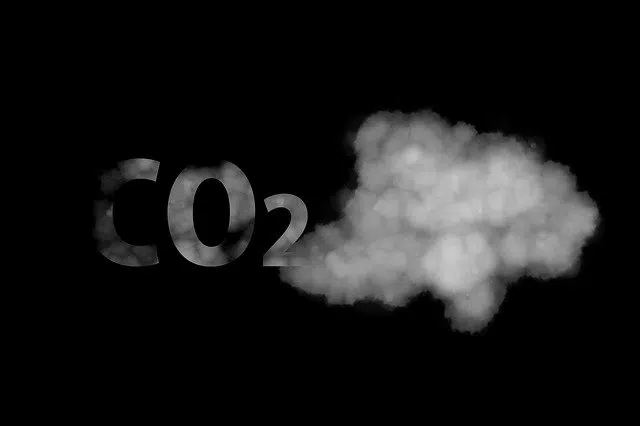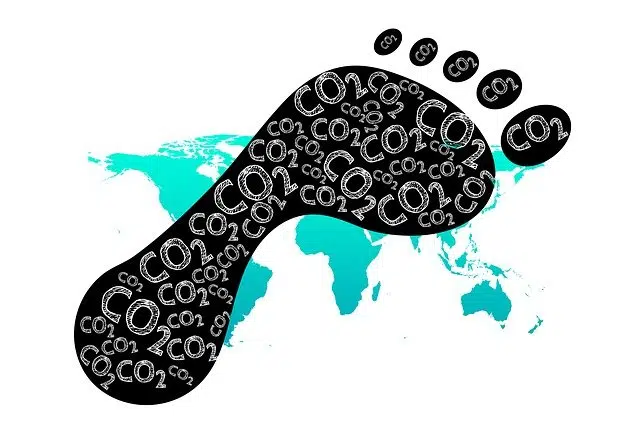
Carbon dioxide molecules have two oxygen atoms and one carbon atom.
A dioxide is an oxide (a compound that arises from the combination of oxygen with a metal or metalloid) that has two oxygen atoms in its molecule. Carbon , for its part, is the chemical element whose atomic number is 6 .
Carbon dioxide is the gas that is formed when one carbon atom and two oxygen atoms combine : CO2 . This gas , which causes the so-called greenhouse effect , is generated by the combustion of different materials, by the fermentation of sugars, by the decomposition of organic substances and by the respiration of aerobic beings, for example.
Carbon dioxide in the atmosphere
Carbon dioxide is present in the atmosphere of planet Earth in a concentration that varies according to the time of year and other factors. The increase in the concentration of CO2 in the atmosphere contributes to the aforementioned greenhouse effect and, therefore, global warming .
This increase in carbon dioxide in the atmosphere began to intensify after the Industrial Revolution . Machines and vehicles that burn fossil fuels produce carbon dioxide that then accumulates in the atmosphere.

The so-called carbon footprint reflects the impact of activities on the environment, measured according to carbon dioxide emission levels.
Different uses
It should be noted that carbon dioxide, in its various forms, has multiple uses. Soft drinks (also called soft drinks, sodas or carbonated drinks) achieve their effervescence thanks to the inclusion of carbon dioxide.
On the other hand, carbon dioxide in a solid state, known as dry ice or dry ice , is used as a refrigerant and as a fire extinguishing agent. Unlike traditional ice, it does not generate moisture when it sublimates.
It is important to clarify that carbon dioxide is not considered harmful to our health or toxic, although this does not mean that it is beneficial. Firstly, it does not serve us in the breathing process, which is why it is precisely the gas that we discard once the oxygen has been used. Therefore, if we are in a room in which there is a high concentration of carbon dioxide we can feel especially fatigued, since it tends to displace oxygen in the air.
Officially, no carbon dioxide concentration thresholds have been established above which it can be considered dangerous for our health. In closed spaces, this value usually doubles or even triples what we find outdoors, where it is around 400 parts per million.
Some characteristics of carbon dioxide
Its molecule has linear geometry (its different atoms are arranged in 180° bonds) and symmetrical (the arrangement is the same after cutting the structure with an imaginary plane). It is possible to represent it with the following Lewis structure: O=C=O .
Two names that carbon dioxide received in the past are carbon dioxide and carbon dioxide .
It is an odorless and colorless gas if kept at atmospheric pressure and room temperature , although it solidifies if the temperature is below -79 °C and decomposes if it exceeds 2000 °C.
The density of carbon dioxide is 1.5 grams per cubic centimeter (that of air is 30% lower) and it has good solubility in water (for each volume of water, 90% of the volume of carbon dioxide is dissolved) .
Training processes
To form carbon dioxide, it is possible to use several processes, such as the following:
* combustion : both fossil and non-fossil materials (coal, oil or gas, for example);
* fermentation : of sugars generated by yeast and bacteria, which usually lead to the release of carbon dioxide, as well as alcohols and/or acids;
* respiration : all living beings that breathe release this gas after having taken oxygen from the environment ;
* reaction : of carbonates found in an acidic medium.
